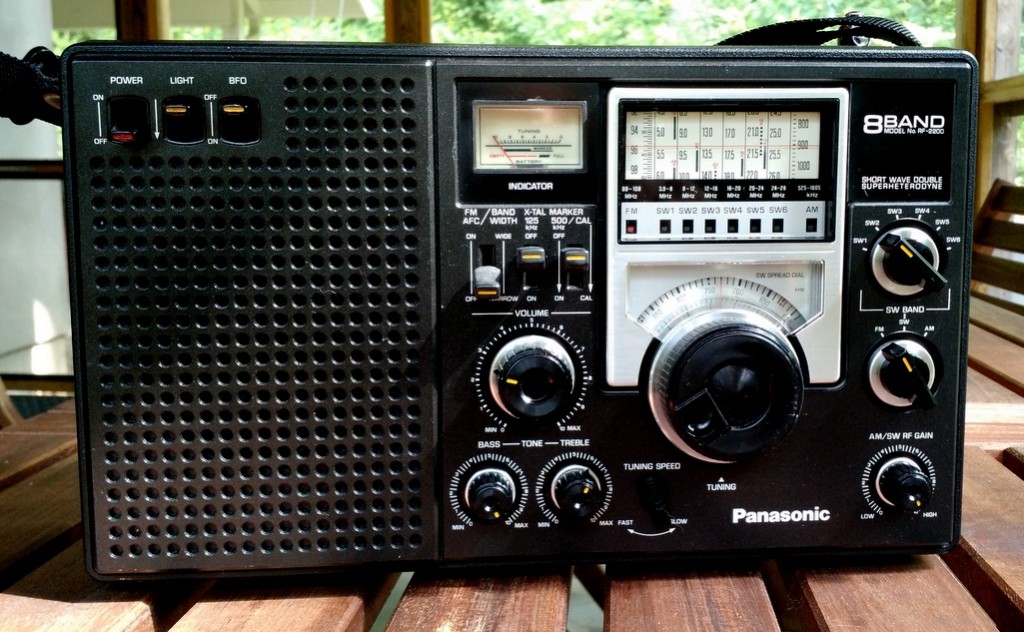Many thanks to SWLing Post contributor, Richard Langley, who shares the following article by James Careless in Radio World Magazine.
The article includes interviews with Andy Sennitt, Kim Andrew Elliott, Nigel Fry, and even yours truly. The following is a short excerpt taken from the introduction of the article:
(Source: Radio World)
OTTAWA, Ontario — With the advent of radio in the 20th century, the shortwave band (1710–30,000 kHz) soon became a hotbed of long-distance radio broadcasting. Used primarily by state-run international broadcasters, plus ham radio operators and ship-to-shore radio communications, the shortwave band was prized due to its astoundingly broad reach.
That reach was — and is still — made possible by the tendency of ground-based shortwave radio transmissions to bounce off the ionosphere and back to earth; allowing shortwave broadcasts to “hop” repeatedly, increasing a broadcast’s range while minimizing its decay.
[…]At the height of the Cold War, the shortwave bands were packed with content as the Voice of America and West Germany’s Deutsche Welle (Voice of Germany) traded ideological punches with Radio Moscow and East Germany’s Radio Berlin International. This is because analog shortwave radio broadcasting was the only way for both sides to make their political cases cross international borders: There was no satellite TV, let alone any internet.
This article is well worth reading and one of the more in-depth pieces I’ve seen in a trade publication or news site recently.
I should add that I completely agree with James Careless’ conclusion:
“[T]he research that went into this article suggests that the shortwave band is sufficiently alive to be still evolving.”
The fact is, the shortwave landscape is not what used to be in the Cold War. Many of those big voices have left the scene and, in the process, left the door open to others.
The shortwaves are a dynamic communications space that continues to evolve.
That’s why I keep listening.
Want to read more about the future of shortwave radio? Click here to read Does Shortwave Radio Have a Future?


I still used my fully restored mint Zenith Trans-Oceanic T600 leather shortwave radio from the mid-fifties. It’s an amazing device. I also replaced all tubes with solid state tubes and it’s in perfect alignment. I pick up a lot of SW. I also remember well listening to Radio Moscow in the cold war days. Shortwave will always get through unless jammed. I’ll be listening to shortwave radio forever. I find my Trans-Oceanic a strong performer decades later and nostalgic, and the new SW radios are amazing. I also have a switcher type battery pack that just uses “D’cells. I just find SW to be an amazing communication medium.
The internet is taking a heavy toll on shortwave broadcasting. Indeed, the internet is taking bite out of all radio broadcasting including television: both over-the-air and cable. Many SW broadcasters that I enjoyed in 1970’s are now just a memory.
Still, I can usually find enough English language SW broadcast activity to keep me tuning in every day. Here on the US West Coast Radio Australia and Radio New Zealand can be heard well during much of the day. A few BBC relays may be counted on for daily listening during mornings and evenings. Also daily are China Radio International, Radio Havana Cuba, Voice of Korea (N. Korea), and KBS World Radio (S. Korea). There are quite few other stations heard less frequently due to middle of my night schedules or seasonal or propagation conditions including Voice of Greece, Voice of Turkey, Voice of Vietnam, Radio Thailand, NKH Japan, Radio Romania and Vatican Radio. Non-English language stations offering good music remain numerous.
Today, $150 – $220 will buy a good performing traditional multiband portable radio with excellent SW capability including the Sangean ATS-909X and the Tecsun PL-880. SW performance of these radios are much improved by the use of external antennas. An inexpensive DIY outdoor random wire antenna can do amazing things with these radios.
It would be nice if my portable multiband radio had a DRM button right next to the SSB button but given the failure of portable HD (digital) FM radios to develop a market in the USA I don’t expect to see that happening anytime soon. Sunspot numbers are low and expected to stay low for many years. SW stations are going dark. Still, SW listening remains a fascinating prospect for anyone who appreciates the allure of listening to very long distance radio signals.
What a picture ! Good to see a real radio again, not an sdr or computer in sight, happy days.
Thomas
Nice to see a well-written, balanced view of the status of shortwave radio in Radio World. I think another important movement in radio that is helping to keep shortwave radio alive and interesting is the advances in SDR capabilities. One of my primary uses for SDR technology is for shortwave radio – the ability to catch weaker signals has opened up the hobby even more in terms of catching some of the lower-power stations while being able to enhance clarity.
And for the radio hobbyist/enthusiast utility stations increase the enjoyment of the hobby (and tie in perfectly with SDR) as there are so many ways to monitor various digital modes even with portable radios. With tablets, smart phones, and computers the size of a deck of cards, we can enjoy both traditional shortwave radio and utility modes almost anywhere.
Great job in the interview , and a good read overall! Cheers!